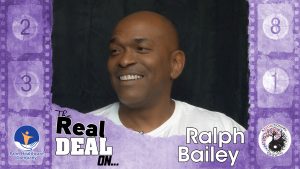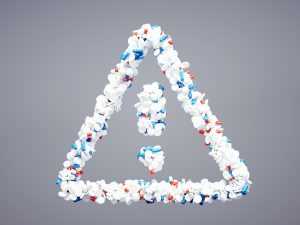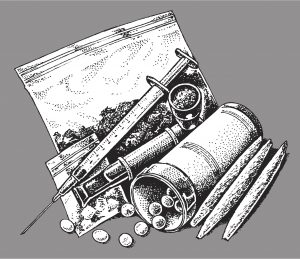by Sher Delva | Jul 18, 2017 | Addiction, Addiction Stigma, Addiction Treatment, Drug Abuse, Mental Health, Stigma, Therapy, Uncategorized

(This content is being used for illustrative purposes only; any person depicted in the content is a model)
A new Oregon bill is headed straight to the governor’s desk.
If passed, the bill would reclassify certain illicit drugs from a felony to a misdemeanor. The goal is to reduce the state’s prison population.The bill would also increase access to treatment for those without prior felonies or convictions for drug possessions, the Washington Post reports.
The bill would reduce penalties for possession of heroin, cocaine, meth and other illicit substances. The bill was already approved by the state legislature and now awaits the signature of the governor.
“We are trying to move policy towards treatment rather than prison beds,” said state Senator Jackie Winters, co-chair of the Public Safety Committee. “We can’t continue on the path of building more prisons when often the underlying root cause of the crime is substance use.”
Also included in the bill is a new initiative that will track the effects of law enforcement policies and procedures by collecting data on the demographic of Oregonians stopped by police. This initiative aims to identify any potential racist practices and address the disproportionate number of black Oregonians behind bars.
According to a 2016 report, by the Sentencing Project, blacks make up less than 2% of the state’s population; yet represent more than 9% of the state prison population as of 2014. Furthermore, the report found that the incarceration rates for black individuals are 5.6 times that of whites.
“Too often, individuals with addiction issues find their way to the doorstep of the criminal justice system when they are arrested for possession of a controlled substance,” says Kevin Campbell, executive director of the Oregon Association Chiefs of Police. “Unfortunately, felony convictions in these cases also include unintended and collateral consequences including barriers to housing and employment and a disparate impact on minority communities.”
Still, some lawmakers are wary of the bill and disagree with its “soft on crime” approach. State Senator Betsy Johnson, a Democrat who voted against the bill, said the shift toward decriminalization promotes a “hug-a-thug policy.”
The bill is headed towards the desk of Governor Kate Brown who will ultimately have the final say. In the past, Governor Brown has expressed support for the bill.
“While we still have much work ahead, HB 2355 represents an important step towards creating a more equitable justice system to better serve all Oregonians,” said Brown. “Addressing disparities that too often fall along racial and socioeconomic lines should not be political issues.”
While states like Oregon are attempting to address these disparities, on the federal level, things are headed in a different direction. Recently, Attorney General Jeff Sessions attended a D.A.R.E. training conference in Texas. While at the conference, Jeff Sessions praised the D.A.R.E. program of the 80s and 90s and hinted at bringing back that initiative today.
D.A.R.E is famously known as the “Just Say No” anti-drug initiative led by Nancy Reagan that took over school campuses in the 80s and 90s. The problem with the campaign is that there were never any proven results stating the program was effective in lowering drug use.
According to the U.S. Bureau of Justice Assistance:
“To date, there have been more than 30 evaluations of the program that have documented the negligible long-term impacts on teen drug use.”
Although the program has undergone some changes, the effectiveness of the initiative remains uncertain. Overall, it is interesting the different strategies certain parts of the country are taking in regards to addressing addiction. While some are focused on decriminalization, other areas have a tougher approach.
What are your thoughts on these new policies? Getting help can save a life, and treatment can offer a far better future than prison. If you or someone you love is struggling, please call toll-free now.
CALL NOW 1-888-922-5398
by Sher Delva | Jul 11, 2017 | Addiction, Addiction Stigma, Addiction Treatment, Mental Health, Withdrawal

Just over five years ago, Ralph Bailey was in his home about to attempt suicide. His addiction had spiraled out of control, and he did not believe he could ever live a day without drugs and alcohol. Then, in a moment Bailey describes as a“divine intervention,” his sister happened to come by the house and stopped him.
The next day, Bailey checked into Palm Partners Treatment Center, a Palm Healthcare facility. Now five years sober, Bailey is a valued employee at Palm Partners and speaks regularly to clients about his journey overcoming his addiction.
Recently Bailey was a guest on The Real Deal On… with Dug McGuirk. Surrounded by lights and cameras, Bailey describes the feeling of sharing his story as a “full circle” moment. He remembers a time when the cameras were on him for an entirely different reason. He was under investigation.
“I remember back in 2010 when I caught a case, and the FBI came in with pictures and audio of me, and it looks just like this.” He says looking around the room. “Now, when I say full circle, it means I went from being prosecuted with these cameras and microphones to actually sharing my experience, strength and hope with these same microphones and cameras.”
Reflecting Back on his “Death Date”
When Bailey first walked into Palm Partners on May 12, 2012, he was broken. In fact, Bailey says the most important day of his sobriety is not the day he entered treatment, but the day he attempted suicide. He refers to this day as his “death date.”
“I was broken to the point where my sobriety date is May 12, 2012, but I always tell my story with my death date which is May 11, 2012. What I mean by that is May 11 is the day I decided to commit suicide,” he says.
At this point, Bailey had struggled with addiction most of his life. He did not believe he could live without drugs and alcohol, but he did not want to continue living like he was. Therefore, suicide seemed like the only way out.
“I didn’t like where I was, and I didn’t want to go back to where I’ve been, and I was too scared to move forward because I could never picture living life without drugs and alcohol, so my plan was to end it all.”
In a moment that Bailey describes as a “divine intervention,” his sister happened to stop by the house and prevent the whole thing from happening.
“For me, it was totally divine intervention because I was successful at everything and it just so happens that for my suicide attempt, I got stopped. My sister came over to my house and stopped the whole thing. That’s when I broke down and told her I needed help.”
To his surprise, his sister told him the entire family knew about his addiction. Up until that point, he thought his addiction had been a secret for the past 20 years.
“She gave me the biggest hug and said ‘This is what the family’s been waiting to hear. You wasn’t fooling nobody,’ And the whole time, I’m thinking I had everybody fooled [and] nobody knew I was getting high.”
Learning to Cope Without Drugs
From an early age, Bailey struggled with abusing drugs and alcohol. He started around eighth grade and said he could not remember a time he did not use drugs and alcohol before his sobriety date.
“I can’t picture a time when I didn’t live without either one, and that’s what got me here.”
Still, like many, Bailey did attempt to get sober on his own.
“I did what everybody tries to do which is the detox on the couch.” He laughs.
Like most who attempt this method, he was unsuccessful. He did not know how to cope with the emotional and physical withdrawals of not using.
“It worked out good for a couple hours until boredom came in, until I didn’t know what else to do besides use drugs and alcohol, so I had nothing to fill the void when I tried to stop and that’s kinda related to my attempted suicide because I didn’t know what to do so that’s when I finally said enough is enough”
Bailey credits the staff, especially the therapists at Palm Partners for helping him learn how to fill the void.
“They’re the ones that made me realize I had more than just a drug and alcohol problem. I had anger issues. I had family issues.”
Bailey entered treatment in his 40s, a later stage of life compared to many in treatment, but he did not let the age of those around him affect his recovery process. Instead, Bailey says he wanted to make up for all the time he had wasted.
“I’ve wasted so much time in my life,” he says. “At that point, I didn’t care if I was getting clean with 18-year-olds, 20-year-olds; my main concern was the end result. As long as that was the same, it was all I cared about, but the main thing: I was tired. I had enough”
Starting Over On a Clean Slate
Furthermore, Bailey says he went to treatment as a “blank sheet of paper” and allowed the therapists and staff to provide him “new blocks to build on.”
“I took everything I knew and threw it out and started over,” he says.
The therapists at Palm Partners gave him the toolbox he needed and allowed him to realize he had the tools all along.
“That’s why I always say be honest with your therapists while you’re here because they can’t help you if you don’t tell them what’s wrong.”
At treatment, Bailey learned valuable lessons like how to deal with life when it does not go the way you want:
“Incidences like not getting your phone or incidences where you want to do something and you can’t should be a tool as ‘Alright, well how am I going to cope with wanting something that everybody has and I can’t have mine?’ That’s the same [lesson] that helps me stay clean. ”
Bailey says the times he could not access his phone taught him patience and helped him realize ineffective character defects addicts struggle with.
“Addicts, first we are manipulative, and then when manipulation doesn’t work, we’re crybabies,” he affirms. “We throw temper tantrums when we don’t get what we want, but we can’t do that in the real world.”
Navigating Grief: Learning to Change Your State:
One of the most powerful lessons Bailey shared in the interview was how he dealt with the death of his brother. After hearing his brother had passed away, he did what most would not think to do at that moment: jumping jacks.
“I had to do something to change my state,” he explains.
In that moment of despair, Bailey remembered something he learned from clinical director Dr. Beley about the way the addict’s mind works.
“Your brain automatically wants to take care of you. It doesn’t want you to feel any pain, but you have a five-second window to make a decision before you go back to what’s comfortable,” he says.
Bailey remembered the way the brain operates in regards to pain. He knew if he did not change his state immediately, his mind would retreat to what was most comfortable.
“If I didn’t start doing jumping jacks right away, my brain would automatically click to get high because that’s how I cope with things so, in order to stop that, I started doing jumping jacks and was able to change my state and then actually think and dissect everything that’s going on. Then start with a clear head and then move forward.”
“It is so huge to be able to change your state. You have to,” he says.
—
Ralph Bailey went from a hopeless drug addict to an inspiration of strength to those struggling in recovery. Throughout the interview, Ralph Bailey further elaborates on the importance of having a higher power, going to meetings and giving back. He talks about positive affirmations and further defines how to overcome negative situations through changing your state. We highly suggest you listen to the full interview for more on his journey.
“I never realized I was in a cocoon. I flourished, I came out of it, and it’s like wow, “he concludes.
If you are currently struggling in recovery, just remember that it is never too late to seek help. Even if you believe otherwise, recovery is possible. You do not have to live every day wondering where your next high will come from. Instead, you can regain control of your life like Ralph Bailey did. We want to help you. If you or someone you love is struggling, please call toll-free now.
CALL NOW 1-888-922-5398
by Sher Delva | Jul 5, 2017 | Addiction

Benzos are so overused that they top all prescriptions in psychiatric medicine and are among the most prescribed medication of any type in the United States. Nearly 50 million benzos prescriptions are written every year.
Prescriptions for benzos have skyrocketed over the past two decades. Between 1996 and 2013, the number of prescriptions for benzodiazepines more than tripled and fatal overdoses more than quadrupled.
What’s the Big Deal?
Benzos are known for helping with anxiety disorders and insomnia, so what’s the big deal if they are heavily prescribed?
Well, there are a couple of reasons why this is a major problem.
First, there is evidence indicating these drugs do not work well over the long-term. Studies reveal that long-term use of benzos can increase anxiety symptoms. Furthermore, it is possible to treat anxiety and sleep disorders without medication, or at least with other medications besides benzos.
The second problem is the addiction and dependence risk. People who receive high doses of benzos can become physically dependent fairly quickly. Without medical supervision, the withdrawals from benzos are severe, ranging from intensified anxiety to high blood pressure, seizures, and convulsions.
The longer someone uses benzos, the greater the likelihood of addiction. People who misuse benzos tend to take higher-than-prescribed doses or mix the pills with alcohol or other drugs. Benzos are often chewed or crushed which interferes with the timed-release formula and speeds up the effects. This way of using benzos is extremely dangerous.
A Deadly Combination?
The true dangers of benzos really amplify when they are taken with other substances like opioids and alcohol. The risk of combining benzos and opioids is well-known, yet many doctors prescribe benzos and opioids together to patients.
From 2001 to 2013, benzos and opioid prescriptions increased by 80%, according to an analysis by researchers at the Stanford University School of Medicine. It is not considered safe to use both together yet this is fairly standard practice.
Opioids vs. Benzos?
Highlighting the dangers of benzos is not intended to diminish the significant dangers of prescription painkillers. Make no mistake, we are in the midst of an opioid epidemic, and opioid addiction has become a national crisis. However, in 30 percent of opioid-related deaths, a combination of benzos and opioids caused the overdose. That’s why it is so important to talk about benzos when we are discussing the opioid epidemic.
Why is this combination so deadly?
Opioids and benzos both slow down the body systems, particularly the respiratory and cardiovascular systems. Therefore, it is not difficult to understand why this combination is so risky. You are essentially combining two substances that slow down the functioning of your body. If you add a cocktail on top of that, it only compounds the problem. In worse case scenarios, this combination of substances causes breathing to stop.
In addition, alcoholics regularly abuse the benzo alprazolam, known by its brand name Xanax. Alcohol is a depressant so combining alcohol with the sedative effects of benzos increases the likelihood of overdose and respiratory failure.
Should Doctors Take the Blame?
The use of benzos often begins in the form of a prescription. Dual prescriptions of benzos and opioids are far from uncommon. Doctors are more likely to prescribe to patients who complain of pain, anxiety, and insomnia during a limited 15-minute consultation time.
In this rushed state, a physician may desire to help a patient but not have the time to explore the underlying causes. Therefore, medication becomes the easiest treatment. It unclear whether doctors are adequately warning their patients of the potential dangers of combining these drugs to help prevent addiction. As for now, it is difficult to place the blame on one person or thing, but one thing is for certain: people need to know the risks.
—
Overall, more and more people are struggling with addiction, and overdose death numbers have reached epidemic levels. If you are currently struggling with addiction, please do not wait. Recovery is possible. Call toll-free today.
CALL NOW 1-888-922-5398
by Sher Delva | Jun 27, 2017 | Addiction, Addiction Stigma, Addiction Treatment, Drug Abuse, Mental Health, Stigma

When it comes to addiction treatment, there’s much that is misunderstood. South Florida is receiving more negative press than ever before in regards to the drug addiction industry
In case you missed it, journalist Megyn Kelly covered issues plaguing the South Florida recovery community in an NBC News Investigation piece. While the piece did an excellent job exposing the bad apples of the addiction industry, it left out important pieces of the puzzle.
To begin, addiction treatment and sober homes are not the same. The piece mentions sober homes and recovery centers interchangeably. This can lead to some confusion as there are differences between the two.
Toward the beginning of the piece, Kelly describes Palm Beach County as the “recovery capital of America” and notes that “some 400 addiction treatment centers are luring thousands of young people.” Soon after, the piece cuts to an overdose occurring in a sober home. This insinuates that sober homes and residential treatment are the same, or connected to one another. In this article, we will specify some of the differences between a sober home and addiction treatment.
What is Addiction Treatment?
There are many well-regarded addiction treatment facilities that have operated for decades in South Florida. When a client first comes to Florida for treatment, typically they go to residential treatment.
Addiction treatment facilities are more regulated than sober homes. Addiction treatment facilities provide around the clock treatment for clients seeking help. Detox is the first level of care for a drug or alcohol treatment program. In this stage, the client is monitored and guided through a safe medical detox.Once medically detoxed, the client enters the residential treatment program. During this stage, the client receives a custom treatment program which includes a combination of therapy, group classes and more.
In addiction treatment, there are licensed mental health professionals and physicians involved in helping clients get sober. There are different levels of care at treatment centers, including detox, residential, day/night treatment (sometimes referred to as partial hospitalization), intensive outpatient, and outpatient treatment.
Residential addiction treatment can last anywhere from 30 to 90 days and in rarer cases longer. Outpatient programs are different from sober homes in that they provide the varying levels of therapeutic care, but the client does not stay overnight.
What are sober homes?
On the other hand, sober homes are essentially homes where groups of people in recovery live together. Sober living units are privately owned and are free of a lot of the regulations needed to open a residential treatment facility.
Fewer restrictions mean people with bad intentions can open a sober home to cash in on the opioid epidemic occurring throughout the nation. Almost anyone can open a sober home, although regulations are being implemented to change this.
While some sober homes are stricter and have tough guidelines such as regular drug screenings, and mandatory meetings, others are not. Some sober homes are simply that: sober homes. These houses are bought and marketed for those who leave addiction treatment and they are not always created by people with the best intentions.
So why do people go to sober homes?
Instead of returning home, many clients will go to sober homes for guidance in maintaining their sobriety. Sober homes give clients a taste of what it will be like to maintain their sobriety on their own. They typically are not the first stop on the road to recovery. Sober homes provide a smoother transition into the real world.
While some sober homes are operated by the same people who run treatment centers, others are not. A sober home typically has a house manager who helps oversee all residents. Living in the sober home helps a person in recovery take charge of their life by learning to pay rent, buy their food, and abide by rules sober. Due to a variety of factors, more people are not going to addiction treatment as their first stop. Some are going to detox and then immediately to a sober home. This creates challenges as sober homes lack the structure and guidelines of an addiction treatment center.
To learn more about the difference between these two, subscribe to our blog and check out our FREE e-book:
5 Critical Mistakes To Avoid When Picking A Sober Home
DOWNLOAD FREE E-BOOK
Truth about Sober Homes vs. Addiction Treatment
South Florida offers vast amounts of recovery options, and with that comes those who take advantage of a booming industry.
Unethical practices happen in illegitimate sober homes and corrupt treatment centers. However, legitimate and accredited treatment centers are out there that do support recovery. Not all addiction facilities in South Florida participate in these illegal practices. Furthermore, the media suggests that Florida has the worse overdose rates of anywhere else, and this is not correct. Areas like Ohio, West Virginia, and others are much higher.
It is important to understand the difference between a sober home and residential treatment. A person in a sober home is living more independently than someone in treatment. The original purpose of a sober home is to be a smoother transition in the recovery process.
Overall, addiction treatment is the first step in treating addiction, not sober homes. There is a difference between the two and it is important that people know the difference. Please make informed decisions when choosing a treatment center for you or a loved one. We can help you in this process. Do not wait. Call now.
CALL NOW 1-888-922-5398
by Sher Delva | Jun 20, 2017 | Addiction, Addiction Stigma, Drug Abuse, Mental Health, Stigma, Therapy, Uncategorized

Autopsy reveals Carrie Fisher had cocaine, ecstasy, and heroin in her system before death
Six months after Carrie Fisher’s death, new reports reveal the cause of death.
Coroner’s officials ruled that Fisher died from sleep apnea and a combination of other factors. The “Star Wars” actress fell ill on the plane last year, but investigators could not determine what impact drugs had on her death.
New Toxicology Reports
Now, toxicology reports reveal that Fisher had cocaine in her system and could have taken cocaine three days prior to the December 23 flight on which she had a heart attack. Fisher died four days after the flight.
The reports also say traces of heroin, other opiates, and ecstasy were found, but they could not determine when Fisher took these drugs. The findings were based on toxicology screenings taken when the “Star Wars” actress arrived at a Los Angeles hospital.
The full report contains a detailed explanation of the results, such as why investigations believe cocaine was taken by the actress at least three days prior to her flight. It also states that while heroin is detectable in the system for a briefer period of time, investigators could not determine when Fisher took it or ecstasy. Toxicology tests also found opiates in Fisher’s system, including morphine, although reports state this could be a byproduct of heroin.
“Ms. Fisher suffered what appeared to be a cardiac arrest on the airplane accompanied by vomiting and with a history of sleep apnea. Based on the available toxicological information, we cannot establish the significance of the multiple substances that were detected in Ms. Fisher’s blood and tissue, with regard to the cause of death,” the report states.
Other Potential Factors
Among the factors that contributed to Fisher’s death was the buildup of fatty tissue in the walls of her arteries, a condition known as atherosclerosis.
A phone message left for Fisher’s brother, Todd, was not immediately returned. Todd Fisher said in a statement Friday that he was not surprised
“I would tell you, from my perspective that there’s certainly no news that Carrie did drugs,” Todd Fisher said.
Carrie Fisher has been open about her drug use to the media and wrote about her struggles extensively. Many of the drugs were prescriptions by doctors to help Fisher overcome her mental health conditions, Todd Fisher noted. Fisher had long battled drug addiction and mental illness.
Fisher started smoking marijuana at 13, used LSD by 21, and was diagnosed with bipolar disorder at 24. Doctors treated her with medication and even electroshock therapy.
“I am not shocked that part of her health was affected by drugs,” Todd Fisher said.
So what was the cause of Fisher’s death?
Todd Fisher believes it was a combination of Fisher’s heart condition along with her smoking habits, and the medications she took.
“If you want to know what killed her, it’s all of it,” he said.
Carrie Fisher opened up in 2016 about her life-long struggles with insecurity. She admits she dealt with it extensively in the original “Star Wars” movie in the 70s. She even admitted to an affair with co-star Harrison Ford, at only 19 years old, in which she felt tremendous guilt.
Furthermore, Fisher has revealed challenges with body image after gaining weight. Before filming “Star Wars: Episode VII”, Fisher admits she was told to lose 35 pounds.
—
Fisher’s life has not always been easy. However, we will always love and appreciated her work. Addiction is a disease and should be treated as such. Fisher’s struggles are not a reflection of who she is as a person. She struggled with the disease of mental illness and addiction like many do. If you struggle with the same issues, please reach out. We want to help you before it is too late. Call now.
CALL NOW 1-888-922-5398






